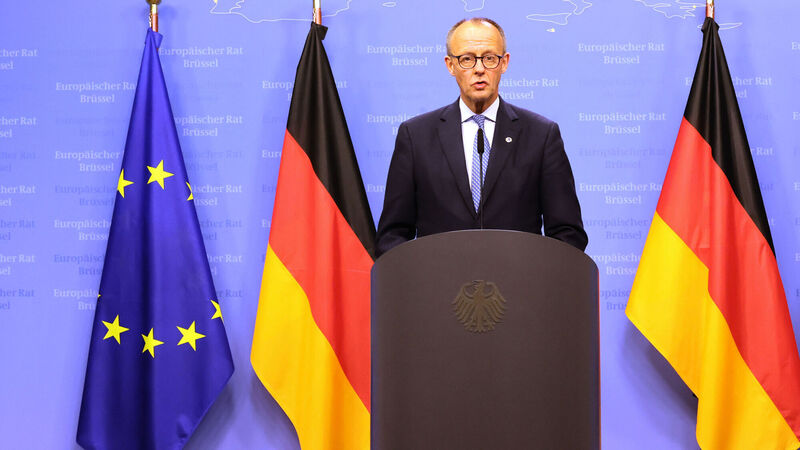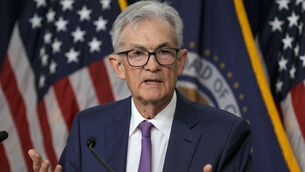John Whelan: Sluggish German economy hits Irish exporters

German Chancellor Friedrich Merz has promised a sharp rise in infrastructure spending and defence spending to fuel growth as the country recorded zero growth in the third quarter.
The German economy has run into stagnation again, with zero growth in the third quarter, figures from the EU statistics agency show.
The impact has been felt by Ireland’s businesses, who experienced a 30% fall in exports to the market over the period from January to August.
German businesses are failing at an alarming rate, according to German agency KfW.
In late 2024, German corporate bankruptcies reached their highest point since 2009, with a 36% year-over-year increase in the fourth quarter. Additionally, approximately 266,000 SMEs are expected to close by the end of 2025.
This surge in bankruptcies is linked to factors such as increased competition from China impacting their auto industry, increased energy costs hitting their energy intensive chemicals and pharmaceutical industries, as well as tariffs on their trade with their major export market: The US.
Irish pharmaceutical exports to Germany, which has been a major driver of the trade growth in recent years, was particularly hard hit in the downturn in exports to the market this year.
The German-Irish pharmaceutical relationship involves complex supply chains, foreign direct investment, and collaboration, enabling Irish companies to grow their presence in the German market and for German pharmaceutical companies to invest and export from Ireland.
As such, pharma companies in both jurisdictions have a common interest in minimising the impact of the US tariffs on their global trading, but ignoring the largest global market for medicines and medical devices in the US is a non-runner.
Following two consecutive years of economic contraction, which has continued into the current year, Germany faces challenges.
The fall in the German economy, which is Ireland’s third-largest export market, adds to the pressure on Irish industry which is struggling to deal with the Donald Trump-induced tariffs on exports to our largest market, the US — as well as a divergent British market.
How to avoid getting pulverised by the global trade mastodons is arguably the defining question of our times for exporters.
Germany’s most immediate problem is that its economic growth has stalled. The European Commission forecasts GDP growth of just 0.7% this year, marking the slowest pace among EU nations.
Since 2017, the German economy has grown by a mere 1.6%, far below the EU average of 9.5%. Structural weaknesses, such as high energy costs, low public investment, and an over reliance on exports, have entrenched stagnation.
The industrial base, once the backbone of the German economy, is eroding. Prominent German companies are relocating some production abroad, citing lower costs and fewer bureaucratic hurdles.
Industrial production has declined steadily, with 2024 output at just 90% of 2015 levels. In contrast, Poland’s industrial production grew to 152% of its 2015 level, reflecting a broader shift of manufacturing capabilities to Central and Eastern Europe.
In contrast to Germany, several Central and Eastern European nations — such as Poland, Hungary, and the Czech Republic — have emerged as more dynamic competitors. These economies benefit from robust foreign investment and growing service sectors.
Spain, too, has become a more attractive destination for foreign direct investment, outpacing Germany in growth and innovation.
Foreign affairs minister Simon Harris believes the answer is for Irish exporters to diversify their markets, as outlined in the Government’s action plan on market diversification.
Launched in August, the plan provides Government and State agency support to help businesses find new trading partners beyond traditional markets such as the US, EU, and Britain.
This strategic initiative is designed to mitigate global trade risks by creating new opportunities in regions such as Asia, Latin America, Africa, and the Gulf.
Realistically, the €3.3bn in lost exports to Germany in the first eight months of the year will be hard to replace in the short term, and building more trade with China may not be the most secure, as rare earth minerals and other EU political issues become critical.














